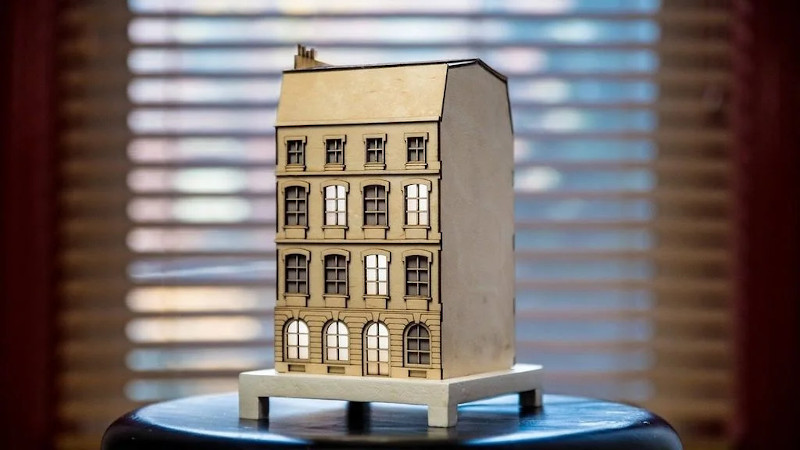Binary clocks are often created as a programming exercise, or to display the time in a project with the minimal practical components. Displaying the time in binary needn’t always be for practicalities sake, however. The City Clock shows that it can be applied quite artfully, too.
The electronic side of things is simple – an Arduino Nano runs 13 LEDs, with a digital IO pin for each. Including a real time clock module is optional, though we imagine pretty essential if you wish the clock to keep accurate time. The LEDs are fitted into a grid, which is fitted behind the windowed facade of the building. This helps block light leaks between adjacent segments, giving a more polished look to the final design. The whole assembly is built out of lasercut wood, making it a quick and easy build if you’ve got such a tool handy.
It’s a simple concept, but one that is particularly striking in action. Even to those unaware of its horological abilities, it presents the appearance of a living building, with inhabitants switching lights on and off throughout the day. It would make an excellent bookshelf or coffee table piece, and we’re highly tempted to give building our own a go. Video after the break.















I’m not usually a fan of binary clocks, but this one is actually pretty cool!
Paris, Texas?
Was expecting Moulin Rouge as a building or a baguette at least, disappointed!
:o)
Through the whole video I was thinking “this is a very strange form of presentation for a simple binary clock build”, “why is he presenting his whole family?”, “wait, 2 years in the making? For this?”. And then the video ended, showing it was a Kickstarter campaign and all the pieces fell into place.
It is rotated 90 degrees from what I was expecting when I first looked at the picture, was expecting 1 floor per BCD digit. Also seems like a perfect opportunity for the mult-color dimable LEDs. Still, it is kind of fun.
Me too, confused me when they showed a time and I was like ‘woah?’ for a few seconds.
If you just used the windows as a matrix you wouldn’t need to have it just display binary. Every building a digit.
This is indeed a beautiful implementation of a binary clock. It is the first project I’ve seen featured on Hackaday that is also available for purchase at the Museum of Modern Art Store.
https://store.moma.org/tech/featured/la-french-tech/the-city-clock/138996-138996.html
It’s a nice jumping-off point to inspire other creations.
Clever and quite elegant.
Very interesting idea. If you want to make something similar, but don’t have the time, patience, or laser to duplicate this effort, you can find an abundance of suitable building models of all sizes and shapes at your nearest model railroad store or, of course, online.
Lots of scope for riffing on this idea as well. Silhouettes that are only visible when a window is lit. If there’s a shop on the main floor, you could add one of those illuminated “OPEN” signs. Streetlights that come on in the evening. Etc.